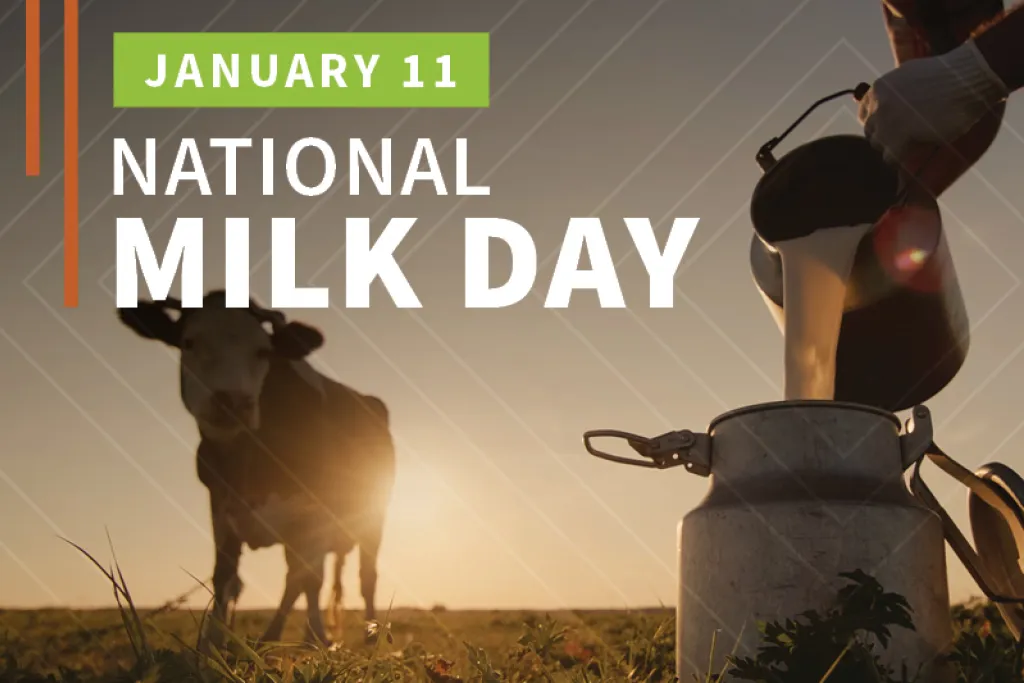Today is National Milk Day, which observes the first time – 1878 – milk was delivered to homes inside sterilized glass bottles sealed with waxed paper.
According to the USDA Economic Research Service, in 2020 more than 9 million dairy cows produced 223.2 billion pounds of milk in the United States. On National Milk Day, we’re highlighting some of the Land-grant Universities conducing dairy research with support from the National Institute of Food and Agriculture (NIFA).
Most people are unlikely to associate seaweed with dairy production. But University of New Hampshire scientists will be working to change that, sharing two grants totaling nearly $13 million to investigate supplementation of dairy cow diets with seaweed to reduce greenhouse gas emissions and improve milk quality and animal health. Learn more about this research funded by NIFA’s Organic Agriculture Research and Extension Initiative and Sustainable Agriculture Systems Program.
With more than 80 percent of the nation’s milk passing through them annually, dairy cooperatives play an ever more prominent role in the management of U.S. milk markets. But their management presents some unique challenges for cooperative members to navigate. With insights from more than 200 dairy farmers, Cornell University researchers evaluated the values and strategic tradeoffs between price components and handler business structure (cooperative or independent). By controlling for handler pricing factors, the team more accurately estimated the value of cooperative ownership to members. Learn more about this research supported by Hatch capacity funding.
Dairy producers know early nutrition for young calves has far-reaching impacts, both for the long-term health and productivity of the animals and for farm profitability. With the goal of increasing not just body weight but also lean tissue gain, a new University of Illinois study finds enhanced milk replacer with high crude-protein dry starter feed is the winning combination. Learn more about this research supported by Hatch capacity funding.
As we enjoy a cold glass of milk today, we recognize the important dairy research being conducted by Land-grant Universities.
Most people are unlikely to associate seaweed with dairy production. But University of New Hampshire scientists will be working to change that, sharing two grants totaling nearly $13 million to investigate supplementation of dairy cow diets with seaweed to reduce greenhouse gas emissions and improve milk quality and animal health. Learn more about this research funded by NIFA’s Organic Agriculture Research and Extension Initiative and Sustainable Agriculture Systems Program.
With more than 80 percent of the nation’s milk passing through them annually, dairy cooperatives play an ever more prominent role in the management of U.S. milk markets. But their management presents some unique challenges for cooperative members to navigate. With insights from more than 200 dairy farmers, Cornell University researchers evaluated the values and strategic tradeoffs between price components and handler business structure (cooperative or independent). By controlling for handler pricing factors, the team more accurately estimated the value of cooperative ownership to members. Learn more about this research supported by Hatch capacity funding.
Dairy producers know early nutrition for young calves has far-reaching impacts, both for the long-term health and productivity of the animals and for farm profitability. With the goal of increasing not just body weight but also lean tissue gain, a new University of Illinois study finds enhanced milk replacer with high crude-protein dry starter feed is the winning combination. Learn more about this research supported by Hatch capacity funding.
As we enjoy a cold glass of milk today, we recognize the important dairy research being conducted by Land-grant Universities.

